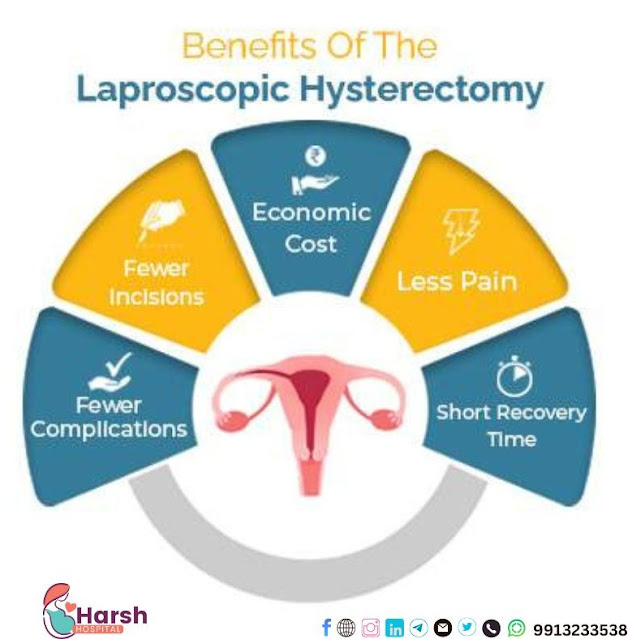 |
The Benefits of Laparoscopic Hysterectomy
What is a Laparoscopic Hysterectomy?
A Laparoscopic Hysterectomy is a minimally invasive surgical procedure used to remove the uterus. Unlike traditional open surgery, this procedure involves small incisions, resulting in less pain, faster recovery, and minimal scarring. It is often recommended for conditions such as fibroids, endometriosis, chronic pelvic pain, or abnormal bleeding.
Key Benefits of Laparoscopic Hysterectomy
1. Minimally Invasive Procedure
Small incisions instead of a large abdominal cut
Reduced risk of infection and complications
2. Faster Recovery Time
Most patients can return to daily activities within 2-3 weeks
Shorter hospital stay, often requiring just 24 hours or less
3. Less Pain & Discomfort
Less post-operative pain compared to open surgery
Reduced need for strong pain medications
4. Minimal Scarring
Small, nearly invisible scars compared to traditional surgery
Better cosmetic results and less psychological distress
5. Lower Risk of Complications
Less blood loss during surgery
Reduced chance of post-operative infections and complications
Who Can Benefit from This Procedure?
A Laparoscopic Hysterectomy is recommended for women suffering from:
Uterine fibroids causing excessive bleeding or pain
Endometriosis that has not responded to medication
Chronic pelvic pain affecting daily life
Uterine prolapse or abnormal uterine bleeding
How is the Procedure Performed?
Small incisions are made in the abdomen.
A laparoscope (a tiny camera) is inserted to guide the surgeon.
Specialized instruments are used to remove the uterus.
The incisions are closed with minimal stitches.
Recovery and Post-Surgery Care
Patients can usually go home the same or next day.
Avoid heavy lifting and strenuous activities for a few weeks.
Follow a doctor-recommended diet and hydration plan.
Attend follow-up appointments to monitor healing progress.
Why Choose Harsh Hospital, Himatnagar?
At Harsh Hospital, Himatnagar, we specialize in advanced Laparoscopic Hysterectomy procedures with expert gynecologists and state-of-the-art technology. Our compassionate care ensures a smooth recovery and the best possible outcomes for our patients.
Take Control of Your Health!
If you're experiencing symptoms that require a hysterectomy, consult our specialists today. Laparoscopic Hysterectomy offers a safer, quicker, and more comfortable alternative to traditional surgery.
📞 Contact Harsh Hospital, Himatnagar for expert consultation and care.
#LaparoscopicHysterectomy #WomensHealth #HarshHospital #MinimallyInvasiveSurgery









